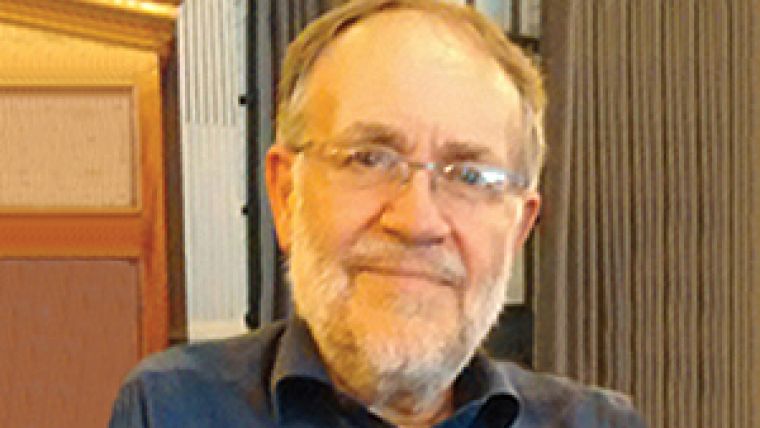A Horrible Word is the Twist that Enables Web Viewing
This article was originally published in Geomatics World.
Photogrammetry is at the heart of so much geospatial modelling but will the surveyor of the future need a tripod? And what became of a company that devised a way of asking questions across the web?
Two articles in this issue, both from Ireland, highlight the rapidly growing popularity across the globe of high-resolution 3D modelling in the heritage sector. Critical to both projects has been the availability of 3D laser scanners. In Scan to HBIM (heritage building information modelling), Conor Dore describes how the creation of a library of classical architectural parametric objects helped create a 3D model of an entire street in Dublin. To learn about this turn to page 14.
Meanwhile, Robert Shaw describes the 3D-ICONS project, funded by the EC, to capture some of Ireland’s iconic archaeological sites from a list of candidates for UNESCO world heritage status. The interesting aspect of this project for surveyors is the integration of technologies: airborne LiDAR, RTK GNSS, terrestrial laser scanning and optical scanning. The result, of course, produces very large files but the twist, as they say on the cookery programmes, is that in order to view the imagery on the web the files have had to be “retopologised” (horrible word!). Turn to page 18 to learn more.
Planning for the Worst
The drive to capture the world’s great heritage sites, whether in war-torn Syria or earthquake-prone regions, is laudable. A detailed record of these sites can only contribute massively to their restoration when the worst happens. In the meantime, researchers and the general public can view the sites in glorious detail. To help with this development a project backed by Oxford and Harvard archaeologists intends to distribute some 5000 cameras around the world for residents to capture their historic monuments in case of natural or manmade destruction. Again, very laudable.
But should we be worried that as technology progresses and is able to deliver ever better viewing experiences, we might lose sight of the value of actually visiting the site? To some extent, it has already happened at Stonehenge where you can no longer wander amongst the mighty Sarsen stones but have to be content with the “visitor centre” experience (incidentally a visitor centre is the best description yet that I’ve heard as to why the ancients created the great henge!).
As we get closer and closer in being able to capture absolute reality – form, colour, texture, even the typical ambience of the site – in the finest of detail and the majority of people become content with the visitor centre’s digital experience, how long will it be before a developer suggests that we move say St Paul’s Cathedral to a more convenient location freeing up valuable city real estate? After all, with 3D imagery and immersive reality and perhaps the ability to touch surfaces, why would you want to bother travelling and wandering around a chilly old building?
Mind the Tripod!
In all of these 3D projects, the key technology is actually not laser scanning but photogrammetry, a once esoteric technique used mainly by surveyors for mapping. Today, photogrammetry is at the heart of turning data into useful information for applications as disparate as landslips, land cover, satellite trajectory determination or interior mapping. Prof Ian Dowman reports from two recent events, PhoWo and Geospatial Week in Stuttgart (something of a centre for photogrammetry) which reveal that while photogrammetric techniques are certainly behind the software, the popular platform for capturing data is rapidly becoming the UAV. Someone has even posited that in future the surveyor’s tripod will be the UAV. Interesting how something that essentially had to be securely positioned and levelled has suddenly become highly mobile.
It seems that at almost every academic event Google is never far away. At Geospatial Week Ed Parsons, the company’s geospatial technologist, showed how that with the acquisition of Skybox Google now has a constellation of small satellites with short revisit times. To learn more about all of this and discover what “voxels” are, turn to page 22.
Happy Holidays
This issue of GW is the last for 2015 so I wish readers a pleasant and peaceful holiday period and new year. We shall be back with the first issue of 2016 in early January.
This article was published in Geomatics World November/December 2015

Value staying current with geomatics?
Stay on the map with our expertly curated newsletters.
We provide educational insights, industry updates, and inspiring stories to help you learn, grow, and reach your full potential in your field. Don't miss out - subscribe today and ensure you're always informed, educated, and inspired.
Choose your newsletter(s)
























